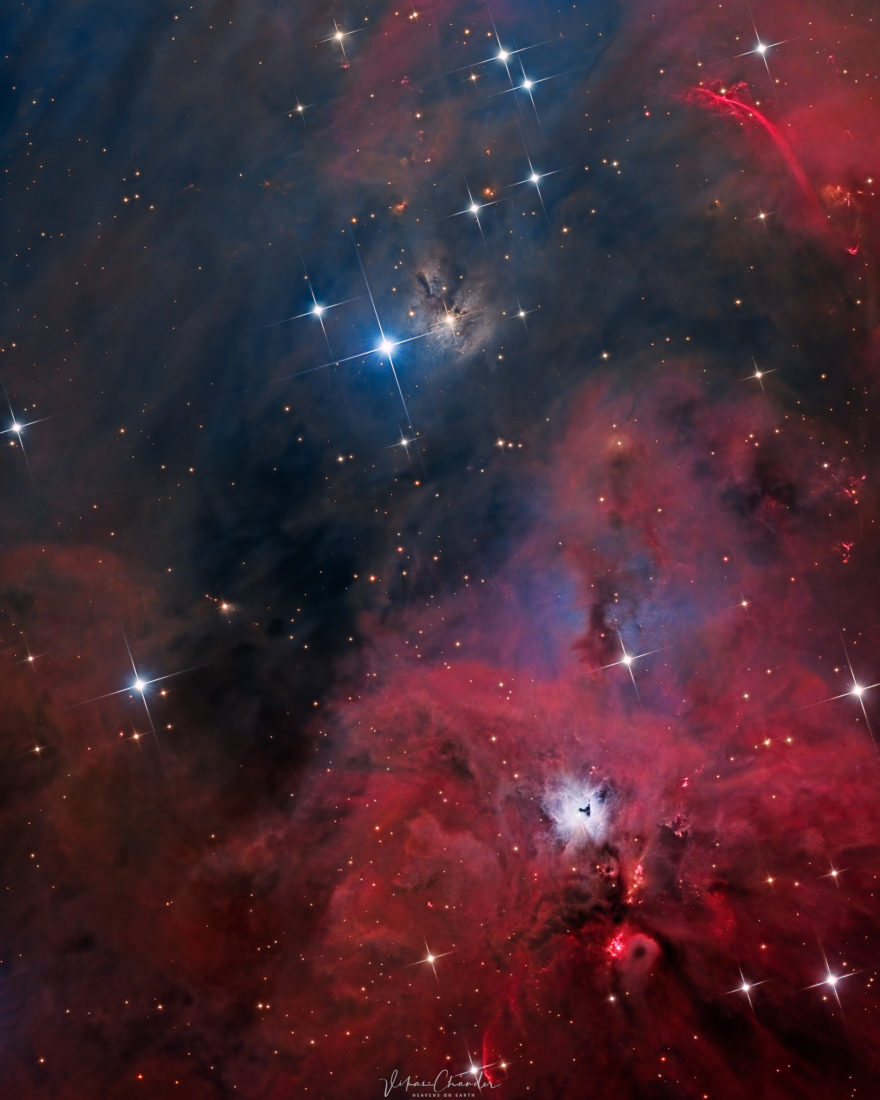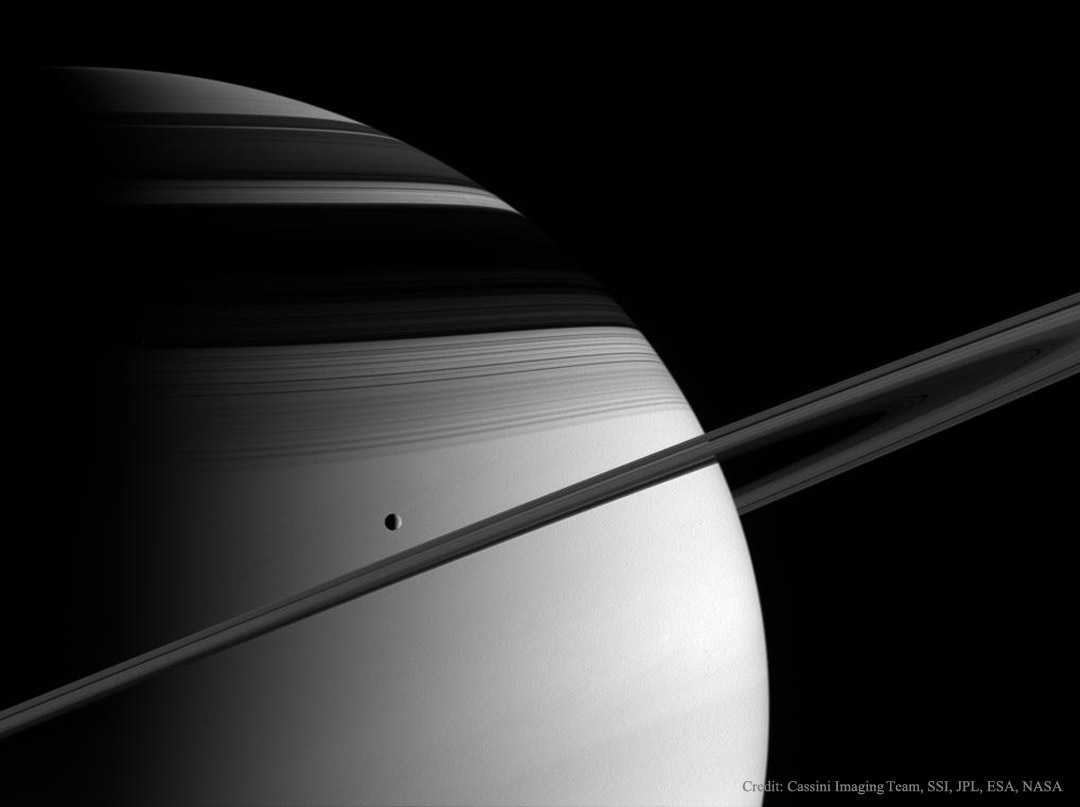Nombre total de pages vues
28/01/2022
27/01/2022
ASTRONOMY - South of Orion
2022 January 27
Image Credit & Copyright: Vikas Chander
Explanation: South of the large star-forming region known as the Orion Nebula, lies bright blue reflection nebula NGC 1999. At the edge of the Orion molecular cloud complex some 1,500 light-years distant, NGC 1999's illumination is provided by the embedded variable star V380 Orionis. The nebula is marked with a dark sideways T-shape at center right in this telescopic vista that spans about two full moons on the sky. Its dark shape was once assumed to be an obscuring dust cloud seen in silhouette. But infrared data suggest the shape is likely a hole blown through the nebula itself by energetic young stars. In fact, this region abounds with energetic young stars producing jets and outflows with luminous shock waves. Cataloged as Herbig-Haro (HH) objects, named for astronomers George Herbig and Guillermo Haro, the shocks have intense reddish hues. HH1 and HH2 are just below and right of NGC 1999. HH222, also known as the Waterfall nebula, looks like a red gash near top right in the frame. To create the shocks stellar jets push through the surrounding material at speeds of hundreds of kilometers per second.
26/01/2022
MICROPHOTOGRAPHIE - Une pause sucrée salée
25/01/2022
ASTRONOMIE - La sonde Parker Solar a "touché" le soleil
NASA/JOHNS HOPKINS APL/BEN SMITH
Edition joanmira
MICROPHOTOGRAPHIE - acide citrique + décalcifiant = bijou à la mer
ASTRONOMY - Video: Comet Leonard over One Hour
2022 January 25
Video Credit & Copyright: Matipon Tangmatitham (NARIT); Text: Matipon Tangmatitham
Explanation: Which direction is this comet heading? Judging by the tail, one might imagine that Comet Leonard is traveling towards the bottom right, but a full 3D analysis shows it traveling almost directly away from the camera. With this perspective, the dust tail is trailed towards the camera and can only be seen as a short yellow-white glow near the head of the comet. The bluish ion tail, however, is made up of escaping ions that are forced directly away from the Sun by the solar wind -- but channeled along the Sun's magnetic field lines. The Sun's magnetic field is quite complex, however, and occasionally solar magnetic reconnection will break the ion tail into knots that are pushed away from the Sun. One such knot is visible in the featured one-hour time-lapse video captured in late December from Thailand. Comet Leonard is now fading as it heads out of our Solar System.
AERONAUTIQUE -.Avions de légende - Le Falcon 7X, un avion présidentiel
23/01/2022
ASTRONOMY - Saturn, Tethys, Rings and Shadows
2022 January 23
Image Credit: Cassini Imaging Team, SSI, JPL, ESA, NASA
Explanation: Seen from ice moon Tethys, rings and shadows would display fantastic views of the Saturnian system. Haven't dropped in on Tethys lately? Then this gorgeous ringscape from the Cassini spacecraft will have to do for now. Caught in sunlight just below and left of picture center in 2005, Tethys itself is about 1,000 kilometers in diameter and orbits not quite five saturn-radii from the center of the gas giant planet. At that distance (around 300,000 kilometers) it is well outside Saturn's main bright rings, but Tethys is still one of five major moons that find themselves within the boundaries of the faint and tenuous outer E ring. Discovered in the 1980s, two very small moons Telesto and Calypso are locked in stable along Tethys' orbit. Telesto precedes and Calypso follows Tethys as the trio circles Saturn.
21/01/2022
ASTRONOMY - Northern Fox Fires
2025 December 12 Northern Fox Fires Image Credit & Copyright : Dennis Lehtonen Explanation: In a Finnish myth , when an arctic fox ...

-
2022 September 26 All the Water on Planet Earth Illustration Credit: Jack Cook, Adam Nieman, Woods Hole Oceanographic Institution ; Data ...
-
2025 May 11 The Surface of Venus from Venera 14 Image Credit: Soviet Planetary Exploration Program , Venera 14 ; Processing & Copyri...







